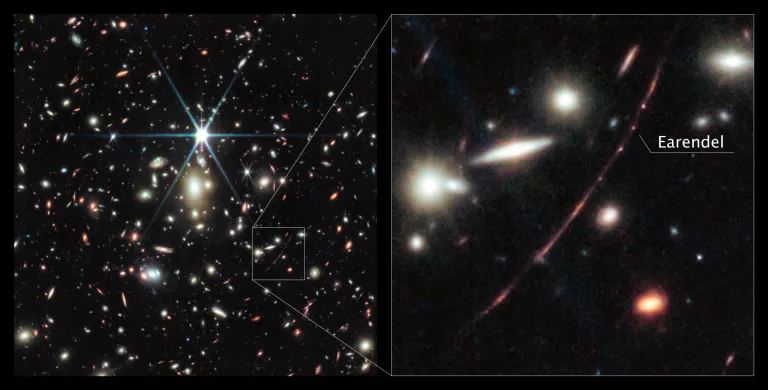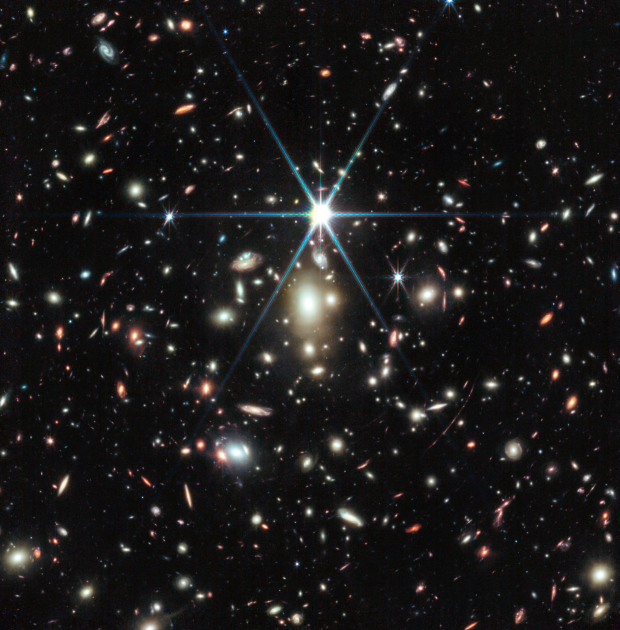JWST Observes the Farthest-Known Star
The James Webb Space Telescope (JWST) recently observed the farthest known star in the universe, building upon the discovery made by the Hubble Space Telescope in 2022. Despite appearing as a minuscule dot in the image, this star holds the key to comprehending the conditions prevailing in the early stages of the universe.
Dubbed Earendel, this star resides within the red-orange curved countenance of the Sunrise Arc Galaxy, situated southeast of the prominent star adorned with large diffraction spikes in the picture. Data obtained from JWST’s Near-Infrared Camera (NIRCam) has now revealed that Earendel is a massive B-type star, more than twice as hot and significantly more radiant than our Sun, as stated in a NASA news release. Astronomers also speculate that Earendel might have a companion, a smaller and cooler sun within its system. Although the presence of the companion has not been definitively detected, there are indications of its existence in the light emitted by Earendel.
The image is predominantly dominated by a colossal galaxy cluster known as WHL0137-08, which facilitated the observation of Earendel through gravitational lensing. This scientific phenomenon occurs when immense celestial objects like WHL0137-08 warp the fabric of space-time around them, amplifying and distorting the light emitted by objects situated behind them. This explains why the Sunrise Arc Galaxy appears as a curved line, as the gravitational lens distorts its image.
The Sunrise Arc image showcases not only Earendel, but also various other elements. These elements consist of youthful regions where stars are forming, as well as older star clusters, which can be observed as tiny dots on both sides of Earendel.

Earendel illuminates the sky approximately one billion years after the occurrence of the Big Bang. Although it remains the earliest-known star, there are other renowned distant stars such as the red giant Quyllur, which came into existence three billion years after the Big Bang.
With the combined efforts of the JWST and Hubble telescopes, there is optimism among scientists that they will eventually be able to detect the very first generation of stars. These stars, composed solely of hydrogen and helium, hold the key to unraveling the mysteries of the universe’s origins.
This article is republished from astronomy.com under a Creative Commons license. Read the original article.
Do not forget to share your opinion with us to provide you with the best posts !




0 Comments